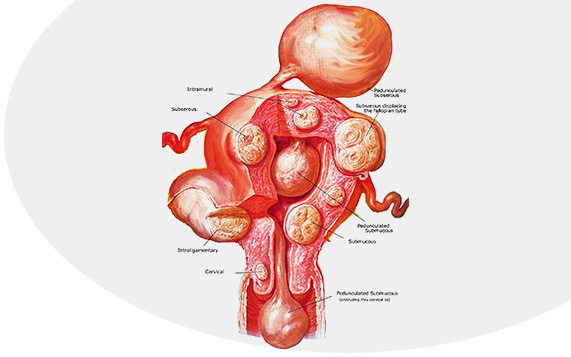
Leiomyomas, i.e. myomas, are non-life threatening nodules that can reduce quality of life. They do not cause any symptom in some women, but may lead to anemia, vaginal bleeding, menstrual irregularity and pain in other women depending on their location, amount and size.
Leiomyomas that develop in different parts of the uterus and usually occur in the vaginal wall have the tendency to shrink during the post-menopausal period. Myoma can be seen in approximately 50% of women before the period of menopause, and rarely occur in those below the age of 20.
It is accepted that there are different risk factors leading to the formation of myomas, which are not known exactly. The high levels of estrogen and progesterone and genetic predisposition are among the risk factors for the formation of myoma.
What Are The Symptoms of Myoma?
Myoma symptoms and their severity may vary from person to person. Myomas usually do not cause any symptom if they are small. However, they may lead to complaints such as abnormal vaginal bleeding, frequent urination, constipation, cramps in the lower abdomen, bleeding between periods and pain during sexual intercourse according to their size, amount and location.
How Are Myomas Diagnosed?
Gynecological examination is the first step to diagnose myomas. Besides gynecological examination, different diagnostic methods may be required. Diagnostic methods such as transvaginal ultrasound, laparoscopy, HSG, CT, Magnetic resonance imaging (MRI) can be used to diagnose myoma.
How Are Leiomyomas Treated?
Leiomyoma treatment is also planned specifically for the person. If myomas are so small that they do not cause any complaint, no treatment may be applied to the person. For women whose quality of life is decreased and who have severe myoma symptoms;
- Hormone therapy can be applied to reduce their estrogen levels and shrink their myomas.
- Painkiller can be given for pain caused by myomas.
If leiomyomas are too large, hysterectomy can be performed. However, women should not want to have a child for this surgery. Myomectomy may also be performed to remove medium-sized tumors; so, the uterus can be protected.
